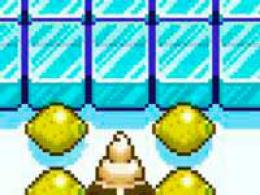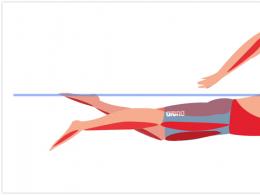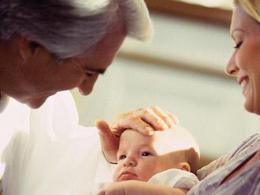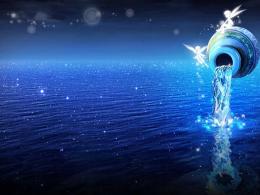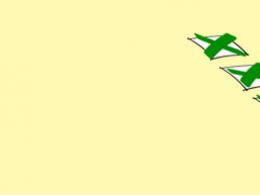Lesson “How a person uses the properties of water. How is the power of water used? What is a hydroelectric power plant? How a person uses the properties of water 4
“Properties of water” - How much water is there on our planet? Aquarium, Aquatorium, Scuba, Watercolor. And practically, not in words, we will touch upon interactions with water. A piece of lithium is taken with tweezers. Acid oxide - carbon dioxide - readily combines with water. Let's deal with oxides first. Special properties of water. What else does solubility depend on?
“Man and Water” - Glaciers are formed from snow. We wash ourselves with water. Hydrosphere = oceans + land water + water in the atmosphere. Seaweed is a common dish among residents of Korea, China and other countries. Crabs, oysters, and shrimp are of great importance. How is fresh water used by humans? Glaciers: mountain, cover, icebergs. There can be no life without water.
“Use of water” - Procedure for agreeing on “rules”. Issues of using reservoirs for flood protection. Procedure for using dispatch schedules: The history of the development and application of the “Rules” goes back about four decades. Environmental requirements in the downstream. agricultural and forest lands FPU 5% + 0.5 m. Document structure.
“Water for Humans” - Interesting facts about water: Some countries are already experiencing a shortage of good fresh water. Address by the Chairman of the Council of Ministers of the Russian Federation V.V. Putin. There are about 1330 types of water in nature. The world's oceans account for 94% of the total water supply. Everyone must contribute, from the President to the first grader.
“Water and its properties” - But water with salt in 2 hours only acquired a light coating on the surface. The ability to release heat to the environment through evaporation. Molecules on the surface of water experience intermolecular attraction on one side. In reality, single water molecules do not exist at normal temperature and pressure.
“Water and its properties” - Water is close, but walking is slimy. About water. WATER - Veda Image of YES (good truth). The story is like resin, but the story is like water. Riddles about water. Rainy summer is worse than autumn. Water is off a duck's back. Knows the image of good. Project modules. Properties of water. If you don't know the ford, don't go into the water. Presentation of the project “Tell your mother, grandmother, aunt...”.
Lesson topic: “How a person uses the properties of water.” Lesson on the world around us in 4th grade Textbook by A.A. Vakhrusheva, O.V. Bursky.
Lesson objectives. 1. To form in students an understanding of buoyant force and the most important properties of water - fluidity, the ability to dissolve substances.
2. Teach students to appreciate scientific knowledge and inventions that make human life easier.
| Teacher activities | Student activity |
||||
| 1 Organizational moment. 2.Updating knowledge and creating a problem situation . Guys, we will now repeat our knowledge about water. Why do living organisms need water? What states does water come in? Compare these states of water. What natural phenomena are associated with the transition from one state to another? Which objects sink in water and which don't? (Assumptions are recorded in the table.)
Read the dialogue on p. 83. What are our heroes talking about? What question do you have? 3. Finding a solution to the problem . 1) Work in pairs. Students conduct experiment No. 1 according to the assignment on p. 83. Why did the weight displace water from the glass? Working with the left picture on p. 84. Why doesn't the ship sink? (This is the buoyant force. It is directed upward and is equal to the weight of the displaced water.) How does a person use the buoyant force of water? Message: “This law was discovered by the famous ancient Greek scientist Archimedes. He proved that the tree is pushed to the surface because it weighs less than the displaced water. But iron and stone sink because their weight is greater than the buoyant force. Why does a ship whose hull is made of iron float? Because the underwater part of the ship is filled with air, which weighs little and displaces a very large volume of water. 2) Experience No. 2. -Look at the strips of paper. What color are they? Compare the color of the water with the color of the paper strips. What color is the water? 3) Experience No. 3. Take a spoon and put it in a glass of milk. What can you say? The spoon is not visible. Place a spoon in a glass of water. What are your results? 4) Experience No. 4. - Now taste the water. What conclusion can we draw? PHYSMINUTE. Pump Now turn on the pump, We pump water from the river, Left - one, right - two, Water flowed in a stream. One, two, three, four - (3 times.) We did a good job. (Tilt to the right, the left hand slides up along the body (to the armpit); tilt to the left, move up with the right hand.) 5) Experiment No. 5. Cut an orange. Smell it. What can we say? Now smell the water. What does the water smell like? 6) Experiment No. 6. Let’s take a glass of water again and pour the water into vessels of various shapes. The water will take the shape of these vessels. What's the conclusion? Where can we see these properties in nature? Slide (Rivers of different widths, waterfall). 7)) Experiment No. 7. Sprinkle salt and sugar into a glass of water. What happened? (Water and sugar have dissolved. Who will draw the conclusion? Where do we use this property? 8) Experience No. 8. (with communicating vessels) Let’s take this interesting vessel and pour water into it. What do we see? The water has settled at the same level. This property is called the “law of communicating vessels.” In what direction did the water move? How does a person use this property? The operation of the fountain and water supply is based on this property. (Reading the text on p. 83 3. Consolidation . Crossword. We have considered only part of the basic properties of water. Let's repeat what properties of water we got acquainted with today? Do the crossword puzzle. 1. Everyone knows this liquid Happens in rivers and seas In the tap that is At home in the bathroom, they didn’t recognize me This is strange... (water) word 1. 2. What force helps ships not to sink? (buoyant force) word 2. 3. It gurgles in the stream He runs into the distance over the pebbles. (fluidity) word 3. 4. A property of water that helps cook food. (solvent) word 4. 5. Lemon has it, sugar has it, salt has it, but water doesn’t have it. What does water not have? (taste) word 4. 6. What else does water not have? (colors) word 6 and (smell) word 7. 4.. Lesson summary and reflection. What properties of water did you learn about today? Let's read it again. (buoyant force, fluidity, ability to dissolve, water has no taste, color, smell). Please complete these sentences. Today I found out... I managed… It was difficult.. I was surprised... It was interesting… Now I can... 5.Homework. P. 19 Read. P. 88 Answer the questions. | Answer questions. Fill out the table. What properties does water have? How do people use the properties of water? Children express different hypotheses. The underwater part of the ship is filled with air, which weighs little and displaces a large volume of water. For shipping, lifting loads from the bottom of a reservoir, floating wood along the river. Conclusion: Water has no color. Conclusion: the water is clear. Conclusion: Water has no taste Conclusion: water is odorless. Conclusion: water flows and takes on different shapes. Children's answers. Conclusion: water is a good solvent. In cooking, washing and medicine). During the construction of water pipelines and fountains. They solve a crossword puzzle. |
Self-analysis of a lesson on the world around us in 4th grade Textbook by A.A. Vakhrusheva, O.V. Bursky.
Lesson topic: “How a person uses the properties of water.”
Lesson objectives:
Educational: .
1. To form in students an understanding of buoyant force and the most important properties of water - fluidity, the ability to dissolve substances
2. Create conditions for developing the ability to see, compare, generalize and draw conclusions;
Educational:
- develop mental activity by attracting entertaining material and creating problematic situations;
- develop logical thinking, imagination, perception, speech.
Educational: To teach students to appreciate scientific knowledge and inventions that make human life easier
During the learning process, I form the following blocks of UUD.
Personal UUD:
-internal position of the student;
- educational and cognitive interest in new educational material;
-focus on understanding the reasons for success in educational activities;
- self-analysis and self-monitoring of results;
-the ability to self-assess based on criteria for the success of educational activities.
Cognitive UUD:
-search and selection of necessary information;
-application of information retrieval methods;
- the ability and ability of students to perform simple logical actions (analysis, comparison).
Communication UUD:
-
I develop the ability to explain my choice, construct phrases, answer questions, and give arguments; ability to work in pairs and groups, taking into account the position of the interlocutor; organize and implement cooperation with the teacher and peers.
Regulatory UUD:
-
control in the form of comparison of the method of action and its result with a given standard;
-correction;
-grade.
Resources: Textbook by A.A. Vakhrusheva, O.V. Bursky.
Lesson type: lesson in mastering new knowledge.
I built my lesson in accordance with the Federal State Educational Standard, using information and communication technologies.
During the lesson, the age and psychological characteristics of the students were taken into account. In the content of the lesson, I included elements of teaching schoolchildren universal educational actions: the goals of the lesson were determined by the students themselves, based on the corresponding problem situation.
In this lesson, a system-activity teaching method was used.
Any process of cognition begins with an impulse that encourages action. Motivation is needed to encourage the student to begin the activity. With this in mind, I thought through each stage of the lesson, composed assignments, selected questions, and used various techniques to activate students.
At all stages of the lesson, students were involved in active mental and practical activities of a research nature; children had to not only use existing knowledge, but also find a new way to perform an action they already knew.
The stages of the lesson were closely interconnected, various types of activities alternated. Mental actions were based and supported by practical ones.
A situation of success was created for each student, which also helped to increase motivation and maintain cognitive interest in learning.
When asking questions and defining tasks in the lesson, I took into account the individual characteristics of the students, gave only positive characteristics to the results of their activities, which stimulated the children and increased their activity in the lesson.
The educational information was attractive to the children. Due to the attractiveness of the content of the assignments and the presentation of educational material, the students’ opportunities to achieve their goals in the lesson increased.
Study time in the lesson was used effectively, the planned volume of the lesson was completed. The intensity of the lesson was optimal, taking into account the physical and psychological characteristics of the children.
1. Draw how water flows from a hose.
2. What makes water rise to the floor of the house where you live?
Law of communicating vessels
3. What happens to a can of canned food if you put it on the stove to heat without opening it?
The can will explode as the water inside the can expands when heated.
4 What property of water is used in washing?
Ability to dissolve various substances
5. What devices allow people to harness the power of flowing water?
Hydroelectric power turbines, water mill wheel
6. How to use the hose? Mark the picture in which Misha will be able to fill the bucket when he releases his finger
 7. Measure the volume of a chicken egg using a measuring cup, which is used to measure the amount of liquid and bulk products. Describe the sequence of your actions and the result.
7. Measure the volume of a chicken egg using a measuring cup, which is used to measure the amount of liquid and bulk products. Describe the sequence of your actions and the result.
1 Take one egg, a measuring cup and a knife
2. Using a knife, crack an egg into a measuring cup.
3. Wait until the liquid in the glass calms down and measure.
Result: chicken egg volume 52 ml.
The world
“How a person uses the properties of water”
Gurskaya Lyudmila Vladislavovna,
primary school teacher at GBOU gymnasium No. 343 in St. Petersburg

Guess the riddle
Passes through the nose into the chest
And the way back is on its way,
He's invisible and yet
We can't live without him

Why Questions
- What happens to the volume of air when heated?
- Why don't planes and helicopters fall?
- Why do birds sit ruffled in severe frosts?
- Why are windows made with double frames?
- Why does the ball bounce off the floor when hit?


Answer the questions and write down the letters with the correct answers:
1. What is air?
c) Air is a mixture of gases. It consists of nitrogen, oxygen and carbon dioxide.
b) Air is a substance in which there are many other substances, for example, oxygen, water, clouds, dust, clouds, carbon dioxide.

2. In what case are the basic properties of air indicated correctly?
a) blue color, conducts heat well, elastic, odorless, transparent;
o) colorless, conducts heat poorly, odorless, transparent.
To check the letter with the correct answer, click on the arrow.

3. What happens to air when heated?
e) when heated, air expands;
d) when heated, air compresses;
To check the letter with the correct answer, click on the arrow.

4. What gas do we absorb from the air when we breathe?
j) carbon dioxide;
a) oxygen;
To check the letter with the correct answer, click on the arrow.

To make a letter appear, wait for the hand and click on the rectangle.
To return to the next question, you need to click on the letter again.

Have you heard about water?
They say she's everywhere!
In a puddle, in the sea, in the ocean
And in the water tap.





We are used to the fact that water is
Our companion always!

We can't wash ourselves without it.
Don't eat, don't get drunk.

I dare to report to you:
We can't live without her!

Without water there is no life.
water under a microscope

What color is the water?
What shape does water have?
What does water taste like?
Does the water have a smell?

What happens if you drop a little water on glass?
It will spread.
What color is the water?
Transparent.
What shape does water have?
Has no form.
What does water taste like?
Has no taste.
Does the water have a smell?
Doesn't have it.
What happens to salt if you throw it into a glass of water?
Will dissolve.
What three states can water have?
Liquid, solid, gaseous.

Fluid
Transparent
Has no form
Has no taste or smell
Liquid
Solvent
Firm
Gaseous


Ancient Greek scientist, mathematician and mechanic born in Syracuse
(island of Sicily)




Law of Communications vessels
page 84.
- Read the text of the textbook.
- Find a passage in the text that explains the law of communicating vessels.
- Where is this property of water used?





Cooking food
Preparing drinks
Laundry

Hydraulic jack
Hydraulic Press
Using the power of compressed steam in a steam engine

Where and how do people use the properties of water?
Shipbuilding, sailing
Buoyancy force
Law of communicating vessels
Fountain, water supply
Solubility
In cooking, washing
Incompressibility of water
In technology
Expansion when heated
Steamboat, steam engine
Man uses the properties of water constantly in everyday life.

3 / 4

According to the norms for each city resident
accounts for 220 liters of water per day.
By showering for 5 minutes, you
you spend about 100 liters of water.
Every time you
brush your teeth, you
you spend 1 liter
water.

By filling the bathtub only halfway, you waste at least 150 liters of water.
Single flush toilet –
8 – 10 liters.
Every wash
in the washing machine
requires over 100
liters of water.

Passes through a regular water tap
15 liters of water per minute.
About 1000 pours through an open tap
liters of water per hour.


Water is a liquid, so it
flows.
We wash ourselves with water because it
capable
dissolve
substances.
We see objects through the water because
that she
transparent.


Textbook: pp. 84 -88, answer questions
Find interesting facts about water, proverbs, poems, recipes for water purification

Instructions
First of all, a person uses water for food: he quenches his thirst with it, and prepares dishes with it. Scientists have found that for the normal physical condition of all human organs, it is necessary to drink 1.5-2 liters of water per day, not counting the juices and other liquids drunk during the day.
Personal hygiene cannot be accomplished without water. Washing requires up to 10 liters of water per person, when using a toilet in a house with forced sewerage - up to 45 liters daily, on average up to 190 liters are allocated.
Owners use water to clean their premises. It is estimated that on average up to 180-200 liters of water per day are spent on washing dishes, floors, windows, laundry, and watering indoor flowers.
Water is widely used in rural areas and in agriculture. Also, every year during the season, summer residents use large quantities of water to water their gardens.
When extinguishing fires, it is impossible to do without large volumes of water, since water in such cases is used both as a coolant and as an insulating liquid in the foam composition (it does not allow air flow to the open fire).
Water is also used as the main coolant. For this purpose, it is used in heating networks and heating mains. Water is used as ice to cool various catering systems and for medical purposes.
It is difficult to imagine many sports without water, such as swimming, water polo, rowing, hockey, curling, and others. Healthy relaxation also includes the opportunity to visit a bathhouse, sauna, water park, swimming pool, where you also cannot do without water.
note
Fresh water occupies only 3% of the total volume of water resources in the world. The largest portion of all fresh water on earth is contained in glaciers in the polar regions.
Within the boundaries of the earth's biosphere, water is the most common substance. It is found in both free and bound states. This liquid is the basis of life on the planet. The remarkable properties of water have become the reason for its widespread use in everyday life, production and many other areas of human activity.

Instructions
Water is not only the source of existence for most living organisms; since ancient times it has been one of those substances without which economic processes cannot operate. Rarely does any technical system operate without the participation of this universal liquid. Water is one of those substances that naturally exists on the planet in all three states of aggregation: liquid, gaseous and solid.
Experts know that the main feature of water is the uniqueness of its properties. Almost all of these characteristics are anomalous from a scientific point of view. Water easily changes its states, for example, moving from the liquid phase to the solid or gaseous phase. This liquid is sensitive to magnetic fields and is capable of conducting electricity.
One of the main properties of water is that it increases its volume by about 9%. If this process takes place in a confined space, colossal forces develop, which are successfully used in technical devices, for example, in ice jacks or cold welding machines. This property allows you to develop significant pressure in a small space.
The most common liquid on the planet also has high thermal conductivity, becoming a kind of thermal energy accumulator. There are original heating systems that use this property. In summer, the water in such installations is heated by interaction with the exhaust gases of diesel engines, after which the liquid is pumped into underground storage. In winter, the remaining warm water is supplied to the heating system of the houses.
Water absorbs gases very well. At the same time, up to several tens and even hundreds of volumes of various gases can be dissolved in one conventional unit. If gas is present in the water, a cavitation effect may occur. In places where liquid moves at high speed in a narrow space, water boils and gas bubbles form.
It is difficult to find a solvent better than water. Almost all elements of the periodic table are found in the waters of the planet in a dissolved state. This quality is explained by the high dielectric constant of this liquid. Absolutely pure water is extremely difficult to obtain; it will almost always contain impurities of other substances.
Water has a truly magical property. It has been established that under the influence of a magnetic field, water can change its characteristics. At the same time, the rate of chemical reactions accelerates, salts dissolve faster, and crystals precipitate more rapidly from supersaturated aqueous solutions. Engineers know that in order to make the technological process in which water is involved more intensive, it is necessary to introduce a magnetic field into the system.
Video on the topic
Water is the basis of all life on planet Earth. It occupies 2/3 of the surface of the entire planet and is involved in many processes and reactions. It’s not for nothing that water is called the source of life.

Instructions
Video on the topic
Water as a substance is used in many areas of human life. It is used in utilities, manufacturing, industry, air conditioning systems, etc.

Instructions
Water is the most valuable natural resource of great importance in the life of mankind. It is the only substance in nature that can exist in three physical states: ice, liquid and gas. Water is capable of absorbing large amounts of thermal energy without significantly increasing its own temperature, which ultimately determines the planet's climate. Ordinary clean water contains hydrogen and oxygen. It has a bluish tint and is very difficult to compress.
Water has many uses, each of which has a major impact on the physical and economic well-being of humanity. The largest amount of water is used by public utilities. In particular, the air humidity necessary for the normal functioning of mankind is maintained, air conditioning is provided, and water is required for the operation of such equipment. It cools the heat exchangers of air conditioners and creates the necessary indoor climate in hot weather. It heats houses and public buildings. The maintenance of plant life is based on water, which is provided to them by nature itself.
Man cannot live without water. It cleanses the blood and removes waste products from the kidneys. It is used for preparing food and drinks, during bathing, washing, washing dishes and food. Plumbing equipment requires the use of water as a carrier for waste from sewer systems. There is nothing to replace it when irrigating lawns, bushes and trees in the summer months. Water is used in fire protection. It is important to ensure uninterrupted supply, sufficient capacity and appropriate power of water mains for its unhindered delivery to all places of human settlement and protection from fire.
A fairly large number of outdoor activities involve the use of water. Examples include rowing, swimming, fishing and other water sports. Water is widely used in production and industry, as well as in medicine. There is a whole area called hydrotherapy. It involves the external use of water at different temperatures for therapeutic and prophylactic purposes. The physiology of the action of hydrotherapy procedures is determined by the nature of the irritations that they exert on the skin, and through it on the entire body of the patient.
Scientists have proven that water is capable of carrying information. She has a memory, so water is often used in magical rituals and conspiracies. It is believed that “living” water, found naturally in Tibet, can improve a person’s aura. And “dead” - poison the body and contribute to its early aging.
Video on the topic
